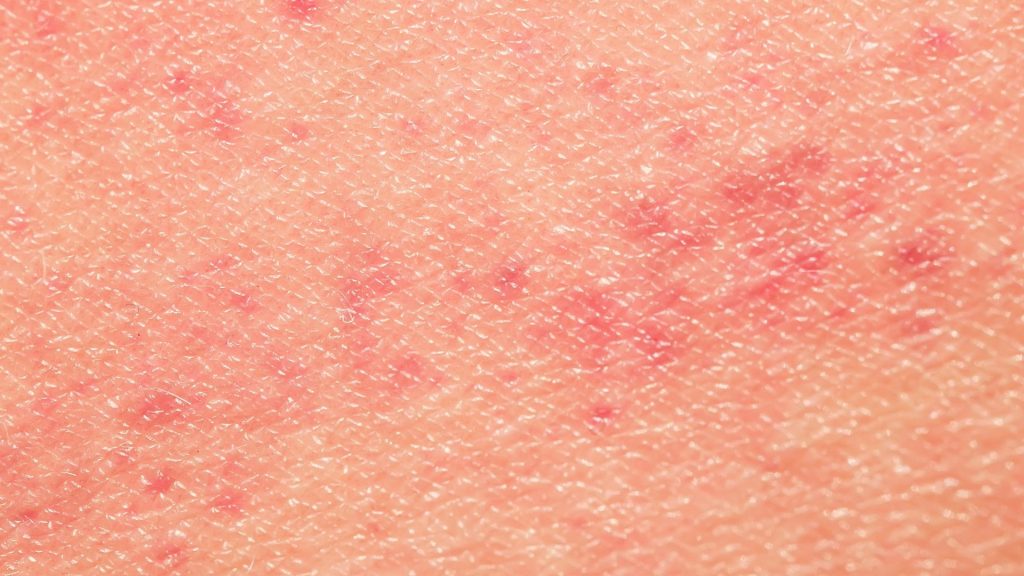Rough skin is a fairly common concern, with bumps, flaky skin and clogged pores being among its symptoms. A simple skincare routine including chemical exfoliant, retinol and moisturizer should help address texture issues; while dermatologists may offer cosmetic procedures like chemical peels or microneedling.
Though perfect, poreless skin may never exist (your pores have their purpose!), these dermatologist-recommended tips will get you close.
1. Exfoliate
Skin texture issues range from dry, flaky skin to bumpy or clogged pores. Nearly everyone deals with rough texture at some point, yet chemical exfoliation, moisturizing effectively and sunscreen use can all help improve it. For more severe texture issues a dermatologist may suggest professional treatments like chemical peels or microneedling as options for improvement.
Skin cells typically regenerate every 28 days, giving rise to new cells at the base of your epidermis that eventually shed off as you age, leading to uneven skin texture.
Uneven skin texture can appear bumpy or rough and feel splotchy to the touch, leaving an unsmoothed surface susceptible to sun damage and signs of aging like fine lines and wrinkles. One way to ensure smooth, bright and radiant skin is regular exfoliation using physical or chemical methods; exfoliation removes dead cells while stimulating collagen production thereby decreasing fine lines and wrinkles.
2. Moisturize
Maintaining moisture on your skin is one of the best ways to achieve a more radiant complexion, particularly if you suffer from rough, dry or bumpy skin.
At its core, skin health requires striking a balance between moist enough skin to prevent dryness but not so oily that clogged pores or acne develop. Utilizing daily moisturizers with ingredients like hyaluronic acid, vitamin E and ceramides is key.
Be sure to protect it with a broad-spectrum sunscreen with at least an SPF30 rating to help minimize fine lines and wrinkles, redness and brown spots caused by sun exposure, while simultaneously helping reduce enlarged-looking pores and uneven skin tone. Though sunscreen won’t give instantaneous results, it will certainly leave your skin looking and feeling smoother!
3. Sunscreen
Sun damage causes many skin texture problems, including spots, wrinkles and roughness. Wearing sunscreen regularly is the key to warding off these signs of aging while simultaneously improving tone and texture of skin tone and texture.
Sunscreens often include moisturizing ingredients to keep skin hydrated and smooth, are non-greasy and easy to apply, and some even come equipped with fragrances and scents that leave behind pleasant sensations when applied directly onto skin.
Study results indicated that people who consistently applied facial broad-spectrum sunscreen had dramatically better skin tone, texture and wrinkle/fine line reduction compared to those who didn’t donning sun protection regularly. Sunscreen provides essential protection from UV rays which cause extreme sun damage; making this step essential for everyone. Likewise, board certified dermatologists may suggest professional treatments like chemical peels and microneedling as further solutions to treat more intense texture issues; using both these services alongside diligent sunscreen application is the most effective way of improving skin texture.
4. Microneedling
As we age, there is a natural decline in collagen and elastin production which results in skin tightening, smoothing and tone loss. Microneedling encourages our bodies to start producing these vital proteins again so we can regain a youthful look.
An uneven skin texture can be caused by any number of factors, including acne scarring, sun damage, dryness and enlarged pores. There are various treatments your dermatologist can suggest to improve this texture – these may include microneedling (also referred to as dermarolling), filler injections, stronger peels and laser resurfacing – which could all help.
Microneedling is a safe and effective method for correcting uneven skin tones. If you want to find out if microneedling could be the right treatment option for you, start by entering your state and clicking “Find a Dermatologist.” Your board-certified dermatologist can then advise if microneedling would be right for you and recommend an aftercare routine to follow afterward.


